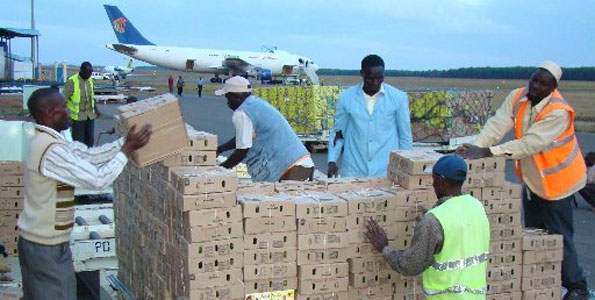Trade blocs to bolster intra-Africa trade, says
Comesa
THE Common Market for Eastern and Southern Africa (Comesa) says implementation of
regional and continental free trade regimes will position Africa into a formidable
economic bloc that can exploits envisaged integration benefits.
Africa has a total of eight regional economic communities, which are recognised by the
African Union, and among these are the Comesa (Common Market for Estern and
Southern Africa), EAC (Eastern African Economic Community) and Sadc (Southern
African Development Community), both of which Zimbabwe is a member.
The continent welcomed its newest economic bloc in January this year, the African
Continental Free Trade Area (AfCFTA), which brings the continent into a single market,
the world’s largest such grouping with about 1,3 billion people.
At the recent 38th Comesa Trade and Customs Experts Meeting, the bloc’s assistant
secretary general Dr Kipyego Cheluget said the implementation of regional and
continental free trade area regimes would position the regional economic communitiesComesa, East African Economic Community (EAC) and Sadc into a formidable economic
bloc to collectively exploit the envisaged benefits of Africa’s integration.
The meeting was attended by delegates from Zimbabwe, Burundi, Comoros, DR Congo,
Djibouti, Egypt, Ethiopia, Eswatini (formerly Swaziland), Kenya, Madagascar, Malawi,
Mauritius, Rwanda, Seychelles, Tunisia, Uganda, and Zambia.
He said although the ratification of the Tripartite Free Trade Area (TFTA) has not
progressed as rapidly as originally envisaged, it remains a commendable effort at
Regional Economic Communities (RECs) consolidation upon which the AfCFTA could
build on.
“The existing RECs are the natural building blocks of the wider AfCFTA trading
arrangement, and we need to double our efforts to complete the ratification process to
make the Comesa, EAC and Sadc Tripartite FTA operational,” he said.
In this regard, Dr Cheluget proposed that the remaining processes under the TFTA should
draw lessons from the AfCFTA, especially with regard to the strategies that were used to
facilitate its rapid ratification and operationalisation.
The TFTA was launched in 2015 and despite achieving numerous milestones, its
implementation has been held back by lack of sufficient number of ratifications by
member/partner states.
Presently, 11 countries have ratified the agreement, three short of the required 14 to
enable it to enter into force.
On the other hand, the AfCTFA achieved the required ratification threshold less than two
years after it was launched.
The Comesa experts’ meeting focused on the review of the implementation of regional
programmes and agreed on policy recommendations to enhance regional integration to
be presented to the Comesa policy organs meetings, including the Council of Ministers
meeting scheduled on December 1, 2022.
Among the key issues tabled to the meeting was the report on the Comesa trade in
services, which covered negotiations, strategies to fast-track the negotiations and issues
relating to tracking and monitoring the implementation of already agreed commitments.
“This committee may wish to make additional recommendations that will ensure that
trade in services negotiations are expedited as the implementation of liberalisation
commitments in services will enhance Comesa’s regional integration agenda,” Dr
Cheluget said.
The report of the Heads of Customs was presented with the pertinent issues being the
slow progress registered in the implementation of instruments expected to support
implementation of the Comesa Customs Union.
An update was also provided on how post-Covid-19 customs administrations have
deployed Information Communication Technology tools and automation to expedite
clearance of goods traded within the region.
The initiatives include automation and use of non-intrusive inspection systems in lieu of
physical inspections, the use of e-declaration processing and submission of electronic
supporting documents, pre-arrival processing, and increased use of electronic cargo
tracking systems to manage transit movements among others, all of which form the
basis for the existing Comesa theme of “Building Resilience Through Strategic Digital
Economic Integration.-The Herald









